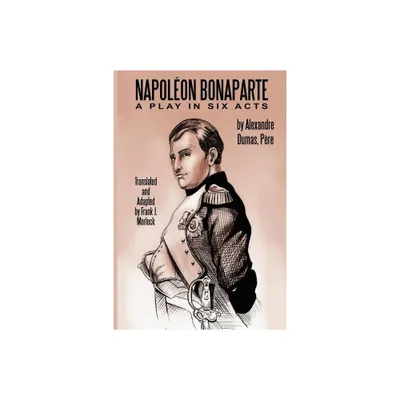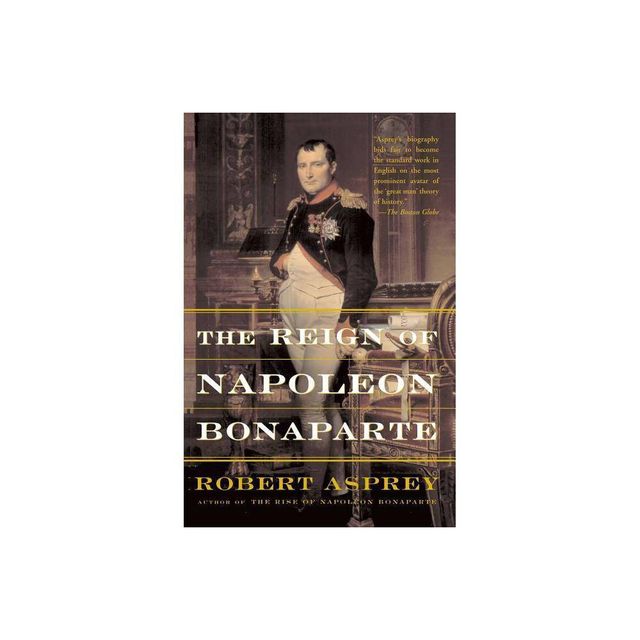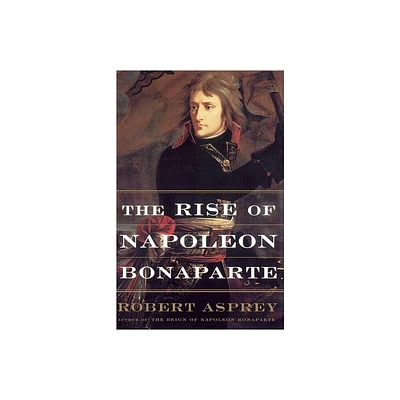Home
Spectacular Politics: Louis-Napoleon Bonaparte and the F�te Imp�rial, 1849-1870
Loading Inventory...
Barnes and Noble
Spectacular Politics: Louis-Napoleon Bonaparte and the F�te Imp�rial, 1849-1870
Current price: $62.00


Barnes and Noble
Spectacular Politics: Louis-Napoleon Bonaparte and the F�te Imp�rial, 1849-1870
Current price: $62.00
Loading Inventory...
Size: Hardcover
*Product Information may vary - to confirm product availability, pricing, and additional information please contact Barnes and Noble
Drawing on newspapers, archival sources, and memoirs,
Spectacular Politics
shows how, as President of the Second Republic and then as Emperor Napoleon III, Louis-Napoleon Bonaparte used public speech and spectacle to dazzle and seduce the French population, helping to pioneer the modern techniques of image politics and the manipulation of a mass electorate.
Elected President of the Second Republic in 1848, the year of the inception of universal male suffrage, this nephew of Napoleon I overthrew that Republic in 1851 to establish himself as Emperor Napoleon III, a title he kept for almost twenty years. During this period, Louis-Napoleon used events as diverse as the annual national holiday on the birthday of Napoleon I, the glitzy inaugurations of Paris's new streets, the universal expositions, and the many military reviews of the time to stage elaborate public celebrations.
Author Matthew Truesdell shows how these events were more than just festive amusements, but were in fact some of Louis-Napoleon's key tools in the projection before a mass audience of powerful images that allowed him to present himself as the incarnation of the national will and the ideal leader for the age. His ability to package his ideas in short, appealing verbal slogans made him one of the most successful political orators in French history. He had a knack for coming up with the felicitous phrase, the emotionally engaging slogan that summed up his policy in simple terms and was infinitely repeated in newspapers, speeches, songs, and poems, in the "soundbite" style that dominates politics today.
But this study also goes beyond the story of Louis-Napoleon's attempts to manipulate public opinion to examine how his political opponentsespecially the republicansused similar techniques in their ultimately successful effort to supplant his regime.
makes a significant contribution to the larger history of the discovery of image and spectacle as tools of political manipulation. It will be of interest to scholars of modern French history, modern Europe, and the history of politics.
Spectacular Politics
shows how, as President of the Second Republic and then as Emperor Napoleon III, Louis-Napoleon Bonaparte used public speech and spectacle to dazzle and seduce the French population, helping to pioneer the modern techniques of image politics and the manipulation of a mass electorate.
Elected President of the Second Republic in 1848, the year of the inception of universal male suffrage, this nephew of Napoleon I overthrew that Republic in 1851 to establish himself as Emperor Napoleon III, a title he kept for almost twenty years. During this period, Louis-Napoleon used events as diverse as the annual national holiday on the birthday of Napoleon I, the glitzy inaugurations of Paris's new streets, the universal expositions, and the many military reviews of the time to stage elaborate public celebrations.
Author Matthew Truesdell shows how these events were more than just festive amusements, but were in fact some of Louis-Napoleon's key tools in the projection before a mass audience of powerful images that allowed him to present himself as the incarnation of the national will and the ideal leader for the age. His ability to package his ideas in short, appealing verbal slogans made him one of the most successful political orators in French history. He had a knack for coming up with the felicitous phrase, the emotionally engaging slogan that summed up his policy in simple terms and was infinitely repeated in newspapers, speeches, songs, and poems, in the "soundbite" style that dominates politics today.
But this study also goes beyond the story of Louis-Napoleon's attempts to manipulate public opinion to examine how his political opponentsespecially the republicansused similar techniques in their ultimately successful effort to supplant his regime.
makes a significant contribution to the larger history of the discovery of image and spectacle as tools of political manipulation. It will be of interest to scholars of modern French history, modern Europe, and the history of politics.


















